Food is rarely just about taste. It is the hands that prepare it, the rituals that surround it, and the people with whom it is shared. A simple dish can hold the weight of nostalgia, carrying with it family traditions and the warmth of togetherness. Much like a song that stirs old emotions, certain foods play in the subconscious, weaving a melody of comfort, love, and belonging. For me, Dal Pakwan is one such dish—a cherished tune from my childhood.
A Dish Steeped in History
Originating from Sindh, Dal Pakwan holds a special place in Sindhi households. After the partition of 1947, Sindhis were uprooted from their homeland, yet they carried their culinary heritage with them, recreating familiar flavours in a new land. Over time, this dish became more than just a meal—it became a symbol of togetherness, often prepared for weddings, festive gatherings, and leisurely Sunday breakfasts. Its distinct combination of textures and flavors has given it an appeal that extends beyond the Sindhi community.
At its core, Dal Pakwan consists of two simple yet deeply satisfying components: a spiced chana dal, cooked to a creamy yet textured consistency, and a crisp, golden Pakwan, a deep-fried flatbread made from all-purpose flour. The dal, tempered with cumin, green chilies, and aromatic spices, is brought to life with a drizzle of tangy tamarind chutney and a sprinkle of chopped onions and fresh coriander. The Pakwan, flaky and crunchy, balances the soft, flavourful dal, creating a harmony of tastes—earthy, spicy, tangy, and crisp—making every bite an experience in itself.
A Kitchen Full of Life
Some of my fondest childhood memories are woven into the making of Dal Pakwan, a ritual that turned the kitchen into a lively, bustling space. My mother led the process with precision and grace, but it was never a solitary task. Instead, it became a collaborative effort, a coming together of mother and daughters. One of us would knead the dough, another would roll out delicate, thin discs, while a third would take on the careful task of frying them to golden perfection. The air would fill with the inviting aroma of deep-fried Pakwans, mingled with the sound of bubbling oil and the laughter that echoed as we worked together. It was more than just cooking; it was a moment of connection, a tradition passed down through generations.
But the joy of Dal Pakwan did not end with breakfast. The leftover crispy Pakwans would find new purpose in an impromptu chaat, transformed with a medley of boiled potatoes, chutneys, sev, and fresh coriander. This quick, flavorful snack was a welcome treat for the steady stream of Sunday guests, who were always greeted with food, conversation, and an open heart. Sundays were seldom quiet in our home; they were filled with the warmth of people coming and going, of stories exchanged over endless cups of chai, of laughter that lingered long after the plates were cleared.
Some Sundays, however, took on a different rhythm. Instead of my mother waking early to prepare breakfast, my father would step in with his own tradition. Once a month, he would make his way to Nava Wadaj, a Sindhi-dominated area in Ahmedabad, returning not only with fresh vegetables but also with plates of Dal Pakwan from a popular roadside stall. Those store-bought Pakwans were massive, larger than the plates themselves, and the dal was noticeably runnier than the one we made at home. It was a rare indulgence, giving my mother a well-earned break from the kitchen, yet no matter how delicious, it never quite carried the same warmth as the Dal Pakwan made in our own home.
Feasting with Friends and Family
When I moved to Pune for further studies, Dal Pakwan became something of a legend among my hostel friends. They had never tasted anything quite like it, and when they finally visited Ahmedabad and had their first bite at my home, they were instantly hooked. Over the years, it became my foolproof way of introducing non-Sindhi friends—and later, my Bengali in-laws—to a piece of my heritage. It was more than just a meal; it was an experience, a story of a community, a taste of history served on a plate.
I still remember the home parties where we would serve Dal Pakwan as breakfast. To make things easier, we would fry dozens of Pakwans the night before, carefully stacking them in a large steel dabba. The next morning, all that remained was to cook the fresh, spiced chana dal, making it a dish both convenient and celebratory. Whether for family reunions or festive gatherings, this meal had a way of bringing people together, creating shared moments that lingered long after the last bite was eaten.
A Dish Born of Necessity
Dal Pakwan’s origins are deeply intertwined with the geography and lifestyle of Sindh. The region’s arid climate made it essential for people to create meals that were both long-lasting and easy to store. Pakwan, being a crisp, deep-fried bread, had an extended shelf life, making it a perfect travel companion for Sindhi traders who spent days on the road. Chana dal, sturdy and nutritious, could be stored for long periods and, when cooked into a spiced stew, provided a filling, balanced meal. It was not just a dish; it was a brilliant adaptation to the challenges of the environment, proof of the ingenuity of Sindhi cuisine.
Bridging the Past and the Present
From humble street stalls in Sindhi-dominated neighborhoods to modern restaurant menus, Dal Pakwan has evolved over time. Today, you’ll find contemporary versions like Dal Pakwan tacos and bite-sized appetizers, giving this traditional dish a trendy twist. Yet, no matter how it is presented, its essence remains unchanged—it is still a dish that connects generations, a bridge between the past and the present.
Though I don’t prepare it as often as I once did, I still make it on special occasions like Sindhi New Year and Diwali. But beyond the flavors, what I truly miss is the ritual—the slow, unhurried Sunday mornings, the chatter-filled kitchen, the comforting presence of my mother as we worked side by side. More than just a meal, Dal Pakwan was a moment suspended in time, where love was kneaded into the dough, laughter was mixed into the dal, and every bite carried the warmth of home.
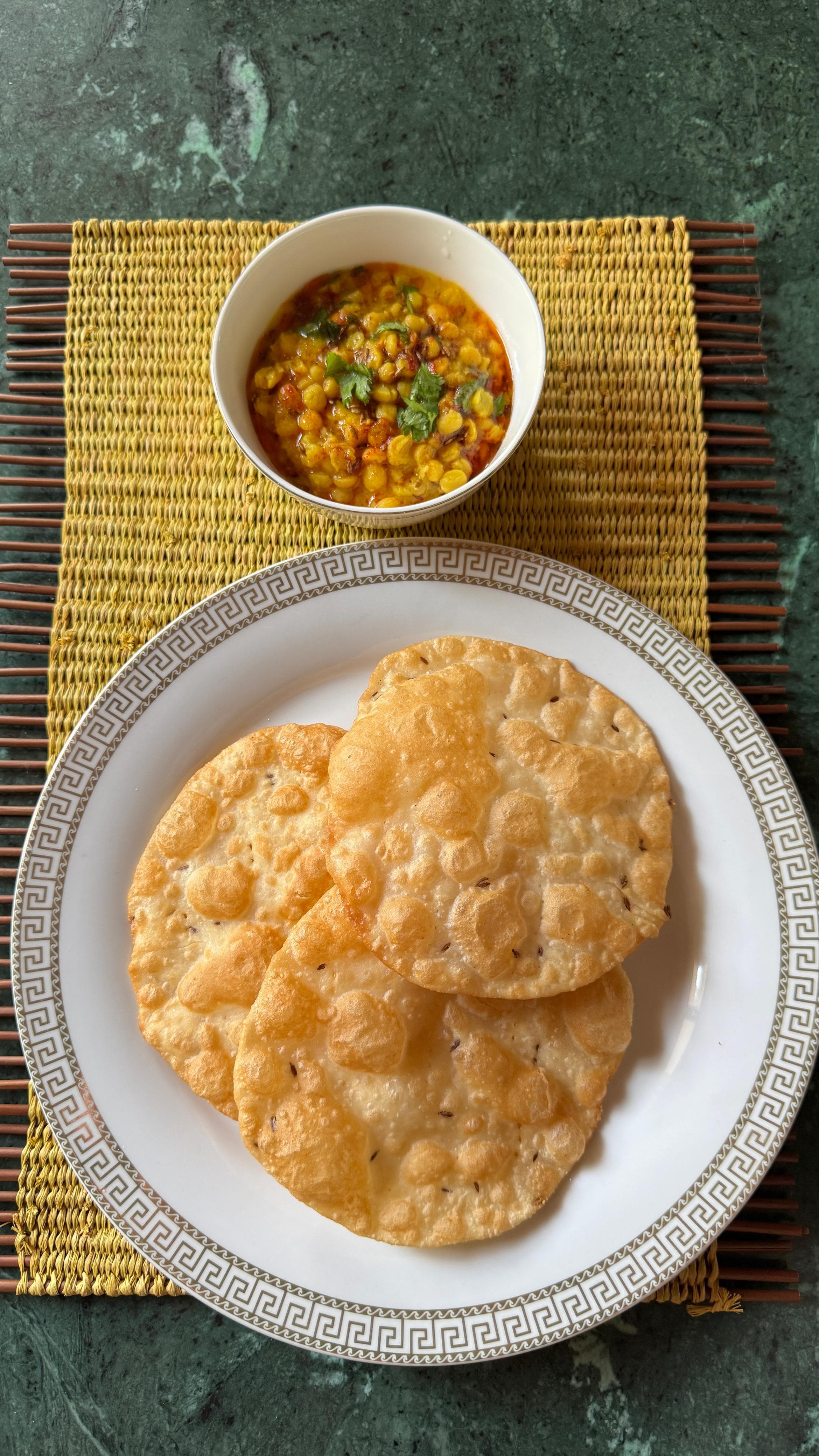
Dal Pakwan
Ingredients
- For the Dal:
- 1 cup chana dal (split Bengal gram)
- ¼ cup yellow mung dal
- 3 cups water
- 1 teaspoon turmeric powder
- 1 teaspoon salt
- ½ teaspoon red chili powder
- ½ teaspoon dry mango powder (amchur)
- 1 tablespoon ghee or oil
- 1 teaspoon cumin seeds
- Pinch of asafoetida
- 1 tablespoon chopped coriander leaves
- For the Pakwan:
- 1 cup all-purpose flour (maida)
- 2 spoons suji (optional, for a firmer texture)
- 1 teaspoon jeera / ajwain
- ½ teaspoon salt
- 1 tablespoon oil or ghee
- Water, as needed for kneading
- Oil for deep frying
- For Garnishing:
- Chopped onions
- Tamarind chutney
- Chopped coriander leaves
- Fried green chillies
Instructions
Prepare the Dal
Rinse the chana dal 2-3 times and soak it for 30 minutes.
Drain and pressure cook the dal with 3 cups of water, turmeric, and salt for about 2-3 whistles or until soft but not mushy.
In a pan, heat ghee or oil. Add cumin seeds and asafoetida.
Add red chili powder and amchur powder to the dal.
Pour this tempering over the cooked dal and mix gently. Adjust seasoning if needed.
Garnish with coriander leaves.
Prepare the Pakwan
In a mixing bowl, combine all-purpose flour, suji, jeera seeds, salt, and oil.
Gradually add water and knead into a firm dough. Cover and let it rest for 10-15 minutes.
Divide the dough into small portions and roll out into thin discs (like puris). Prick them with a fork to prevent puffing.
Heat oil in a deep pan and fry the pakwans on medium-low heat until golden and crispy.
Drain excess oil on a paper towel.
Serving
Serve the hot, crispy Pakwan with the flavorful Dal, topped with chopped onions, tamarind chutney, and coriander leaves.
Enjoy with a cup of masala chai for a perfect Sindhi breakfast!
Notes
Second life: Use the leftover crispy Pakwans to make dahi papdi chaat for an evening snack.
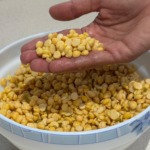
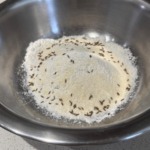
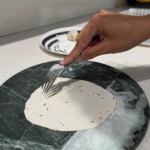
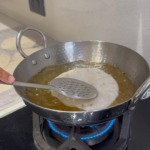
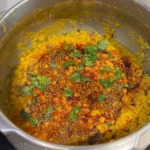
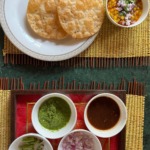

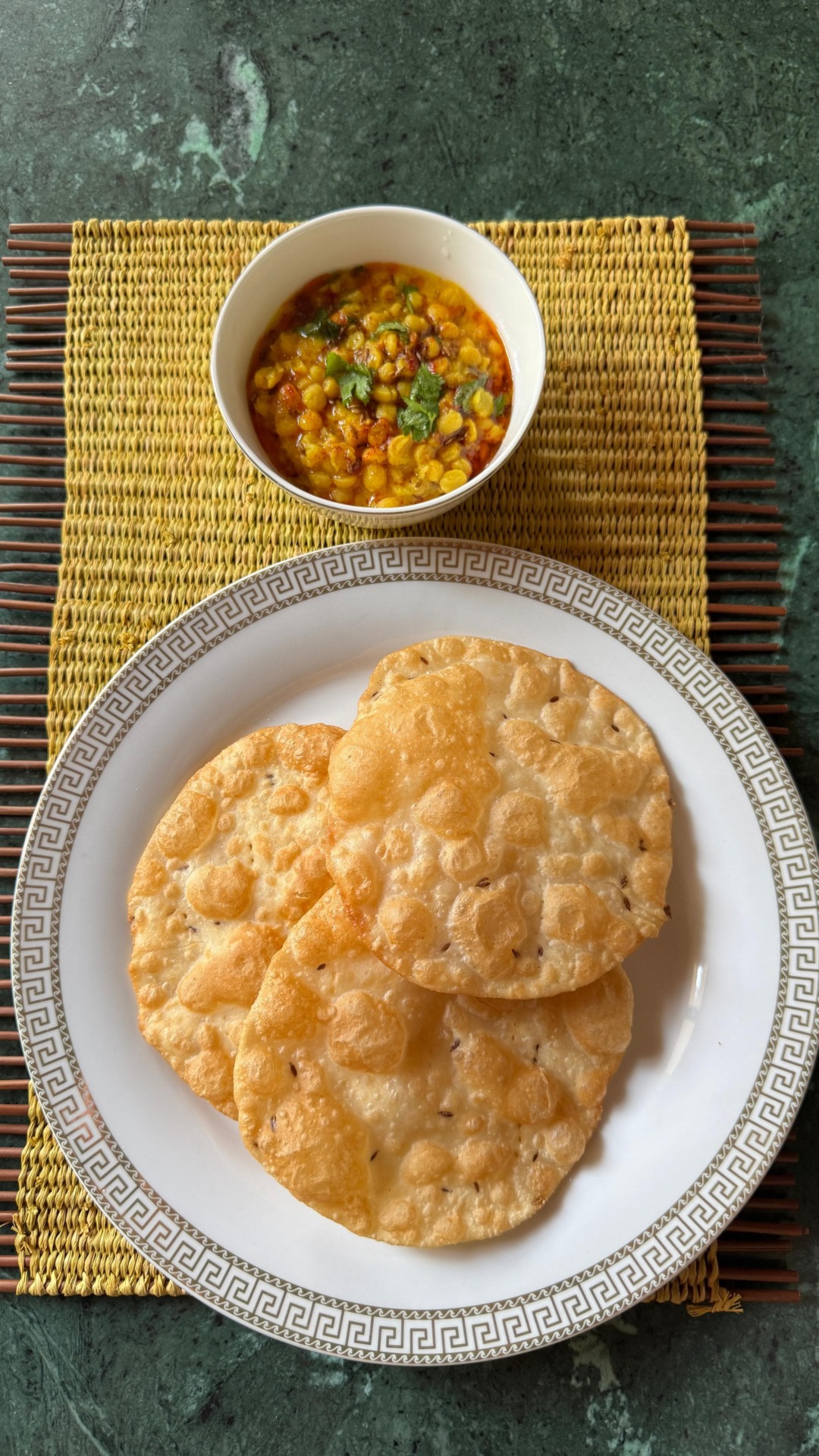

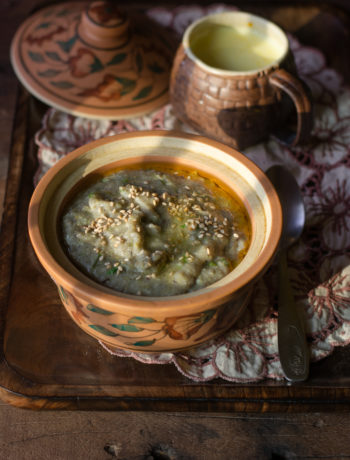
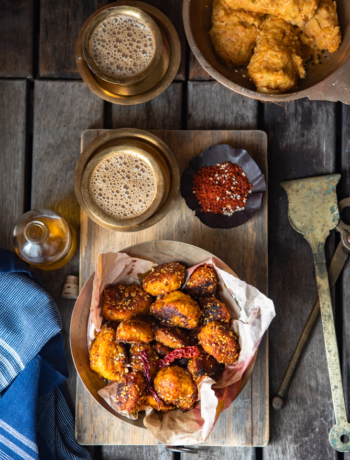
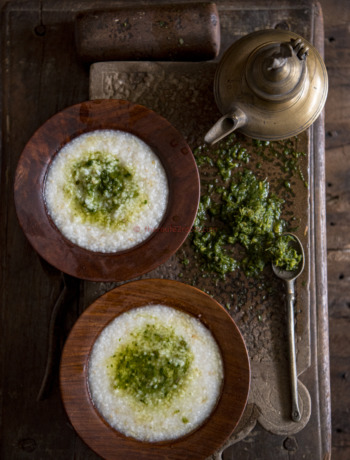
No Comments